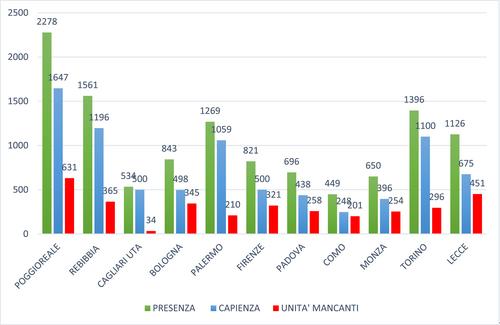The contributing factors to suicide in Italian prisons: An 11-year analysis (2010–2020)
Abstract
Background
Suicide is a leading cause of death globally, with approximately 800,000 deaths annually and accounting for 1.5% of all deaths. Risk factors are multifaceted, encompassing individual factors (such as genetics, family history and mental illnesses) and environmental factors (such as economic conditions, social support and life events). In prisons, suicide rates are markedly higher than in the general population, particularly in Italy, where the prisoner suicide rate is approximately 20 times that of the non-incarcerated population. There is, however, little research on suicide in Italian prisons.
Aims
To analyse the characteristics of all people who died by suicide in Italian prisons between 2010 and 2020.
Methods
We carried out a records-based cohort study analysing official data from the Italian Ministry of Justice on prison suicides between 2010 and 2020. The data were cross-referenced and, when required, supplemented with information from Ristretti Orizzonti, a journal specialising in health and living conditions in prisons, as well as from the website of ISTAT (Italian National Statistical Institute), newspapers, radio broadcasts and news agencies.
Results
Factors associated with an increased risk of suicide in prisons were nighttime periods, the months of June, July and October, a relatively brief duration of detention (<6 months), having been convicted of murder, male gender, being about 40 years old, having access to hanging materials and being interned (i.e. subjected to the execution of custodial security measures) or awaiting trial. Prison overcrowding was not a risk factor for suicide.
Conclusion
Our findings hold substantial implications for suicide prevention in Italian prisons as they suggest both characteristics of individuals and characteristics of the institutions that could be taken as risk indicators. This knowledge can inform the development of targeted interventions to manage both individual and environmental factors better, leading to improved prison conditions and reduced suicide rates. Furthermore, our research establishes a foundation for more systematic and in-depth investigations that could further improve suicide prevention strategies in Italian prisons, ultimately influencing policy changes in both practice and research, including perhaps establishing a national database on every completed suicide in prisons.


 求助内容:
求助内容: 应助结果提醒方式:
应助结果提醒方式:


